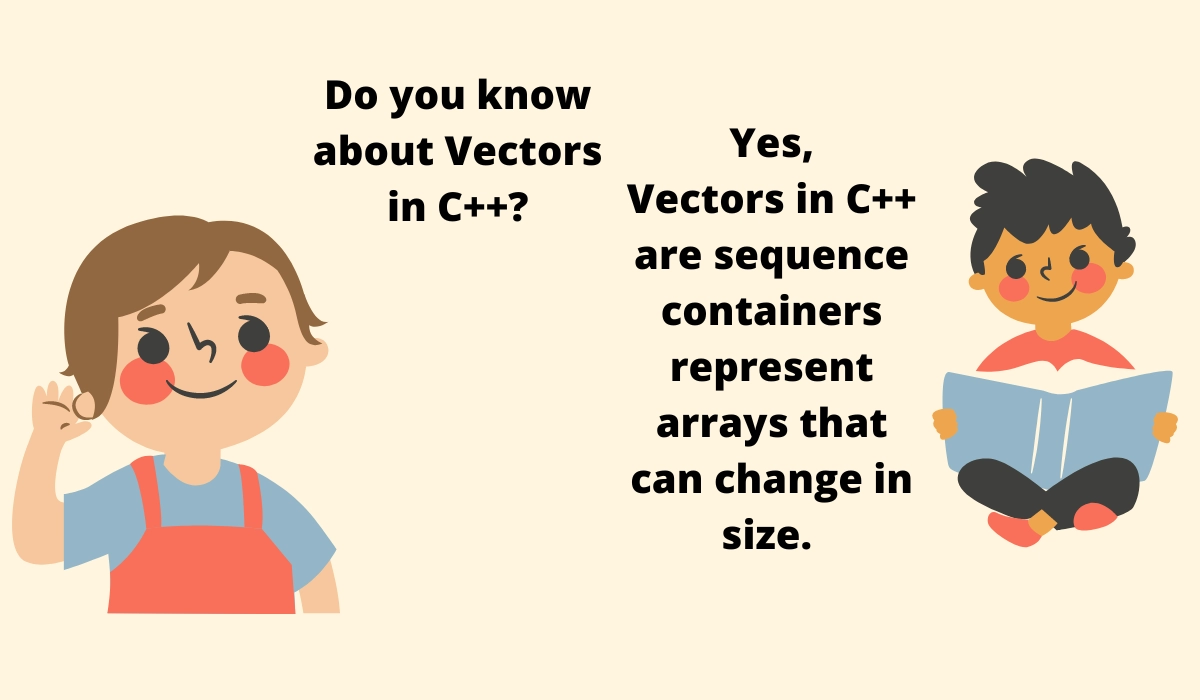Practice Problems On Vector in C++
Hello, everyone in todays blog we are going to discuss the most interesting topic of C++ i.e. VECTOR. VECTOR is same as array just a little difference is that VECTOR can be resize but Arrays cannot be resize once it initialize .
Key Differences in VECTOR & Arrays
- Arrays are Static but VECTOR can be resize according to our need
- VECTORS and Arrays both stored in contiguous memory location.
- VECTORS some time also called as Dynamic Arrays
- Declaration
Ex:- vector<int>v;
- Size
- Resize
- Add Elements
Ex:- 2 3 4
v.push_back(5);
2 3 4 5 //
- Insert Element
v.begin() // to find first element
v.end() // to find last element
- Delete Elements
Ex: 2 3 4
v.pop_back();
2 3 //final answer
- Delete All Elements Of Dynamic Array
These are all the functions used in Dynamic Arrays / VECTOR.
/*Write a C++ program to check whether numbers in
a vector can be rearranged so that each number
appears exactly once in a consecutive list of
numbers. Return true otherwise false.
Example:
1 2 5 0 3 6 7
Check consecutive numbers in the said vector! 0 */
#include<iostream>
#include<vector>
#include<algorithm>
using namespace std;
bool consecutive(vector<int>& v){
sort(v.begin(),v.end());
for(int i=0;i<v.size()-1;i++){
if(v[i+1]-v[i]>1){
return false;
}
}
return true;
}
int main(){
//declaring the vector
vector<int>v={1,2,9,0,3,6,7};
cout<<"Check consecutive numbers in the
said vector "<<consecutive(v)<<endl;
return 0;
}
Output :-Check consecutive numbers in the said
vector 1
2.
/*Write a C++ program that returns the elements in
a vector that are strictly smaller than their
adjacent left and right neighbours.
Example:
Original Vector elements:
1 2 5 0 3 1 7
Vector elements that are smaller than its adjacent
neighbours:
0
1 */
#include<iostream>
using namespace std;
#include<bits/stdc++.h>
void smallerLeftRight(vector<int> &v){
for(int i=1;i<v.size()-1;i++){
if(v[i]<v[i-1] && v[i]<v[i+1]){
cout<<v[i]<<endl;
}
}
return ;
}
int main(){
vector<int>v={1,2,5,0,3,1,7,4,6};
smallerLeftRight(v);
return 0;
}
Output :- 0
1
4
3.
/*Write a C++ program to create an n x n matrix by
taking an integer (n) as input from the user.
Example:
Input: 2
Input an integer value: Create an n x n matrix by
said integer:
2 2
2 2 */
#include<iostream>
#include<vector>
using namespace std;
int main(){
int n;
cout<<"Enter the size of the matrix"<<endl;
cin>>n;
vector<vector<int>>v(n,vector<int>(n));
//input
int input;
cout<<"Enter the input"<<endl;
cin>>input;
//output
for(int i=0;i<v.size();i++){
for(int j=0;j<v.size();j++){
cout<<(v[i][j]=input)<<" ";
}
cout<<endl;
}
return 0;
}
Output:-Enter the size of the matrix
4
Enter the input
2
2 2 2 2
2 2 2 2
2 2 2 2
2 2 2 2 
Comments